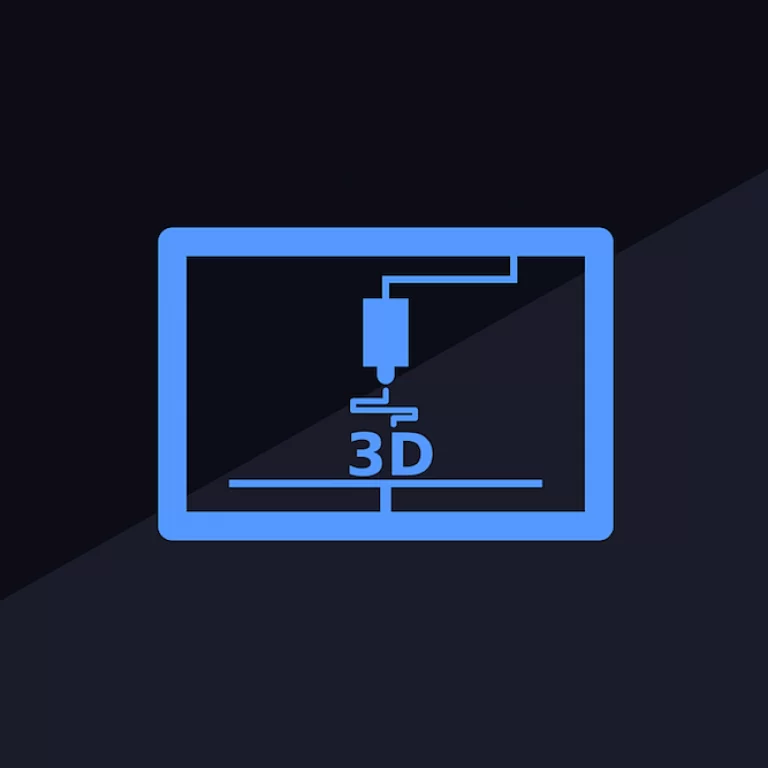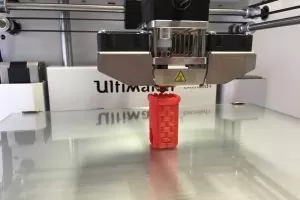
News 3D printing – a glimpse into the future of industry
A three-dimensional perspective can make even the most ordinary of objects appear intriguing, especially through the lens of time-lapse photography.
3D printing is a computerised process, which joins or solidifies materials together to create a 3D object.

Above: an Ultimaker 3D printer in action.
It is commonly used in additive manufacturing and to quickly make scale-model prototypes. Computer-aided design software describes the shape and composition of any 3D object so that it may then be recreated on any 3D printer.
This process, with intricate ‘layers’ built from digital data to create a real object, takes time but is more efficient than other methods, such as injection moulding.
3D printing is the perfect subject for time-lapse photography, therefore, as what can be a lengthy process may be visualised completely in a fraction of the time.
Industry-changing innovations
This kind of technology has recently been experiencing big innovations, such as the world’s first 3D-printed home. The house was ‘built’ in much the same way as a scale-model, except on a much grander scale.
The results are impressive and point to the possibilities for the future of the construction industry. The house took 54 hours to print, plus another four months for contractors to add windows, doors and the roof. Costing £176,000 to build, this makes it 20% cheaper than an identical construction made with more traditional solutions.
The 3D method has also proved more environmentally friendly, as there are no waste materials.
As a professional time-lapse provider, we often work for construction companies, capturing progress across various types of project. With time-lapse construction as a popular genre in its own right, maybe 3D printing will become an integral part of this industry in the future.
Other developments elsewhere in infrastructure include a 3D printed signalling structure on a Transport For London project. TFL’s Four Lines Modernisation aims to increase capacity and reliability on the Circle, District, Hammersmith & City, and Metropolitan lines.
Multinational engineering firm AECOM, working with Scaled (believed to be behind Europe’s largest 3D printer) are looking to print large-scale structures to support rail signalling equipment. Structures will be made of a lightweight material so that only two people are needed to lift it into place in just one shift.
Compared to current signalling installations – requiring more manpower, four shifts and the assistance of a scissor lift – 3D printing proves, yet again, appears to offer more efficient processes for infrastructure. As Mike Hayes notes, “it looks like a clear win for 3D printing.”
Elsewhere in construction, 3D printing has meant that significant parts of a fully-functional mini-excavator have been constructed using additive manufacturing.
From here it is not difficult or long-sighted to see a future where there is little to no human intervention needed on construction sites thanks to 3D capabilities.
3D through the eyes of time-lapse
As with any process which involves significant change from beginning to end, 3D printing is an ideal subject for time-lapse photography.
Printed models appear in a matter of seconds; a fraction of the time required for printing. Of course, watching this process in real time can be rewarding but there is something about seeing the results much faster which is incredibly appealing.
Take this video (below) showing the 3D recreation of the iconic Millennium Falcon from the original Star Wars saga. Printing progress is sped up significantly, further enhancing the object taking shape.
Indeed, the method of time-lapse compliments the particularities of so many other methods, which is something that our Trends series often highlights. See our special feature on 3D printing for more examples.
As well as the obvious visual appeal of these time-lapse videos, they are also a useful way of showing how 3D printing works. Not only an appealing project for hobbyists, however, printing companies themselves are providing this function to their clients.
3D printing provider, AstroPrint, allowed users to capture photos of their object as it printed – initially for monitoring and failure analysis. Given the growing popularity of sharing 3D printing processes, AstroPrint decided to make this data easily accessible on social media platforms.
Users can now easily share still images or create post-processed videos of their printed objects.
It is easy to think that 3D printing is in its infancy, but early developments of additive manufacturing date back to the 1980s. If this is how far things have developed since then, it is incredibly exciting to imagine where the next few decades might lead us.